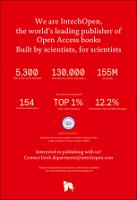Chapter Fracture Toughening Mechanisms in Epoxy Adhesives
| dc.contributor.author | Zuppolini, Simona | |
| dc.contributor.author | Zarrelli, Mauro | |
| dc.contributor.author | Zotti, Aldobenedetto | |
| dc.date.accessioned | 2021-06-02T10:08:04Z | |
| dc.date.available | 2021-06-02T10:08:04Z | |
| dc.date.issued | 2016 | |
| dc.identifier | ONIX_20210602_10.5772/65250_273 | |
| dc.identifier.uri | https://library.oapen.org/handle/20.500.12657/49159 | |
| dc.description.abstract | Fracture toughness is generally considered as the main properties of a polymer or a polymer adhesive system for measuring the material resistance to the extension of cracks. Epoxy adhesives are generally brittle in nature; however, the addition of a second dispersed phase could induce a remarkable increase of damage tolerance performance by an enhancement of the material fracture toughness. The fracture behavior of a filled epoxy resin is strongly affected by the dimensions, the shape, and the chemical nature of the considered filler. The chapter describes the different toughening mechanisms for polymer adhesives with special attention toward innovative nanofiller such as graphene nanoplatelets and hyperbranched polymer nanoparticles. | |
| dc.language | English | |
| dc.subject.classification | bic Book Industry Communication::P Mathematics & science::PN Chemistry::PNN Organic chemistry::PNNP Polymer chemistry | |
| dc.subject.other | fracture mechanisms, epoxy adhesives, filled epoxy resins, inorganic fillers, nanocomposites, hyperbranched polymer fillers | |
| dc.title | Chapter Fracture Toughening Mechanisms in Epoxy Adhesives | |
| dc.type | chapter | |
| oapen.identifier.doi | 10.5772/65250 | |
| oapen.relation.isPublishedBy | 09f6769d-48ed-467d-b150-4cf2680656a1 | |
| oapen.relation.isFundedBy | H2020-MG-2014_TwoStages | |
| oapen.grant.number | 636549 | |
| oapen.grant.acronym | EXTREME |

